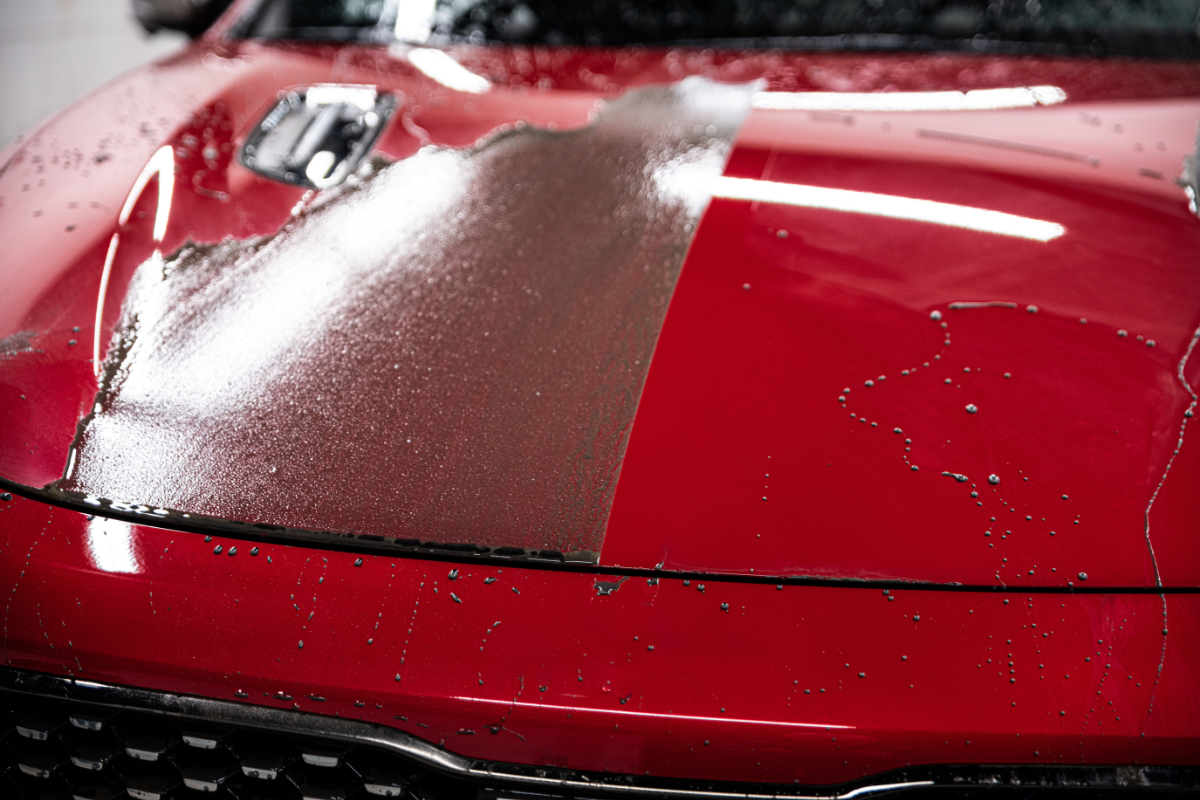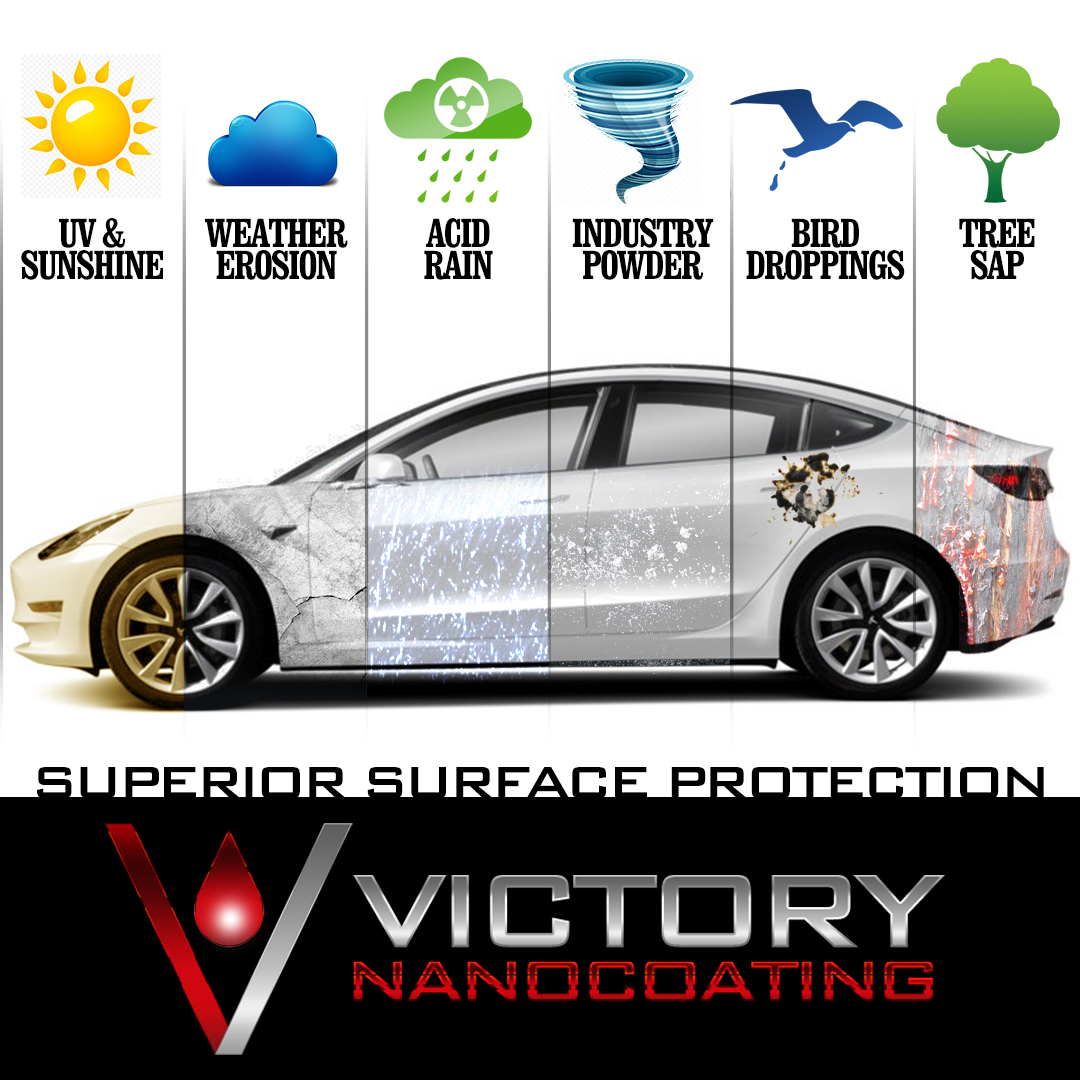Ceramic Coating: How It Supplies Unmatched Protection and Gloss for Your Car
Ceramic Coating: How It Supplies Unmatched Protection and Gloss for Your Car
Blog Article
Discovering the Scientific Research Behind Ceramic Finishing and Its Influence On Vehicle Describing
The application of ceramic covering in cars and truck detailing represents a considerable innovation in automobile treatment, rooted in its advanced chemical homes, largely silica dioxide and titanium dioxide. Recognizing the science behind these products reveals not just the safety benefits they provide but also their role in enhancing a car's aesthetic longevity. As we discover the complexities of the application procedure and the long-lasting effects for automobile upkeep, it ends up being clear that the selection of ceramic finish can basically modify one's approach to car care. What factors to consider should be made before devoting to this transformative service?
What Is Ceramic Coating?
Ceramic finish is a modern-day remedy that has actually obtained appeal in the automotive detailing industry for its capability to offer durable defense for vehicle surface areas. This innovative protective layer is typically made up of silica dioxide (SiO2), which forms a strong bond with the lorry's paint, developing a durable shield against environmental contaminants. Unlike typical wax or sealants, ceramic coatings offer superior resistance to UV rays, chemical discolorations, and physical abrasions.
The application of ceramic finish entails a thorough procedure, where the automobile's surface is completely cleaned and decontaminated before the coating is applied (Ceramic Coating). As soon as cured, the layer enhances the vehicle's gloss, depth, and clarity, giving a showroom-quality surface that lasts for years. Among the crucial advantages of ceramic layer is its hydrophobic residential or commercial properties, which fend off water and dirt, making upkeep easier and lowering the frequency of washes
The Chemistry of Ceramic Finishing
An essential element of ceramic finish lies in its chemical composition, primarily identified by the existence of silica dioxide (SiO2) This substance is indispensable to the development of a sturdy, safety layer that bonds chemically to the car's surface.
In enhancement to SiO2, many ceramic coatings include titanium dioxide (TiO2) and other additives to improve their efficiency attributes. TiO2, as an example, adds to boosted hardness and chemical resistance. The communication between these substances develops a special molecular structure that provides a high degree of defense versus environmental aspects such as UV rays, acid rain, and oxidation.
Additionally, the application procedure typically involves a careful preparation of the surface area to make certain optimum adhesion of the finish. This chemistry not just ensures a durable finish however additionally boosts the aesthetic charm of the automobile. Recognizing the intricate chemistry behind ceramic finishings is important for outlining specialists who intend to give exceptional security and long life for their clients' lorries.
Advantages of Ceramic Covering
While describing experts frequently highlight the benefits of ceramic coatings, their benefits prolong far past visual appeals. The main benefit is exceptional protection against ecological contaminants. Ceramic coatings create a hydrophobic surface that pushes back water, crud, and dirt, dramatically minimizing the regularity of laundries and the effort called for to keep a car's appearance. This protective layer additionally guards the paint from hazardous ultraviolet rays, avoiding oxidation and fading over time.
Furthermore, ceramic coatings enhance the longevity of the car's surface. Unlike typical waxes or sealants, which might last a couple of months, ceramic finishes can sustain for several years, providing a long-term option for car care. This toughness translates to set you back financial savings, as proprietors are much less likely to require frequent reapplication.
Furthermore, ceramic layers are immune to chemical stains and etching, which can occur from check acidic substances like bird droppings or tree sap. This resistance not just protects the car's appearances however additionally minimizes potential damage - Ceramic Coating. Overall, the investment in ceramic finish supplies auto proprietors a significant return in regards to security, ease of upkeep, and durable visual appeal, making it an increasingly preferred option in the world of automotive detailing
Application Process Explained

When the surface is adequately prepared, the ceramic coating can be applied. Using an applicator pad, the technician uses the finish in small areas, functioning in a crosshatch pattern to make sure even coverage.
As soon as cured, the ceramic layer develops a solid bond with the paint, offering boosted protection and a shiny finish. Proper application is important to take full advantage of the long life and efficiency of the ceramic coating.

Long-lasting Influence on Vehicle Treatment
The long-term impact of ceramic finishing on vehicle treatment is substantial, as it basically modifies just how owners keep their vehicles. By producing a resilient, hydrophobic layer on the car's surface area, ceramic finishes reduce the adherence of dirt, gunk, and impurities. This property minimizes the regularity of washing called for, inevitably preserving water and cleaning items.
Additionally, the UV look at this now defense used by ceramic finishings assists to prevent oxidation and fading of the automobile's paint, preserving its aesthetic charm and resale value with time - Ceramic Coating. This safety obstacle also lowers the probability of scratches and swirl marks, which are typical problems in traditional paint coatings
In addition, ceramic layers assist in less complicated upkeep, enabling owners to cleanse their cars with minimal effort. The smooth surface makes it difficult for pollutants to bond, allowing easier elimination throughout routine cleaning.
Over visit this site time, the investment in ceramic finish may bring about cost savings in vehicle treatment items and services. In general, the enduring advantages of ceramic coatings not only improve the look of vehicles however likewise add to a more sustainable and efficient technique to lorry upkeep.
Conclusion
To conclude, the application of ceramic finish stands for a significant development in cars and truck describing, driven by its one-of-a-kind chemical structure of silica dioxide and titanium dioxide. This modern technology not just boosts the visual appeal of vehicles but also offers robust protection against environmental risks and wear. The lasting advantages, consisting of lowered upkeep regularity and boosted durability, emphasize the worth of ceramic layers as an important investment for maintaining vehicle look and honesty over time.

Report this page